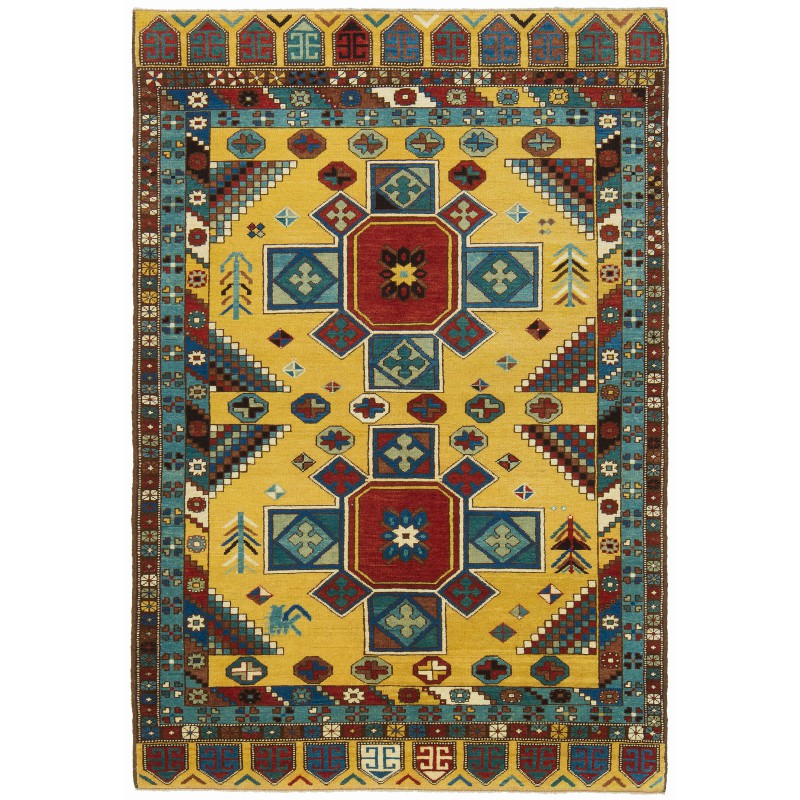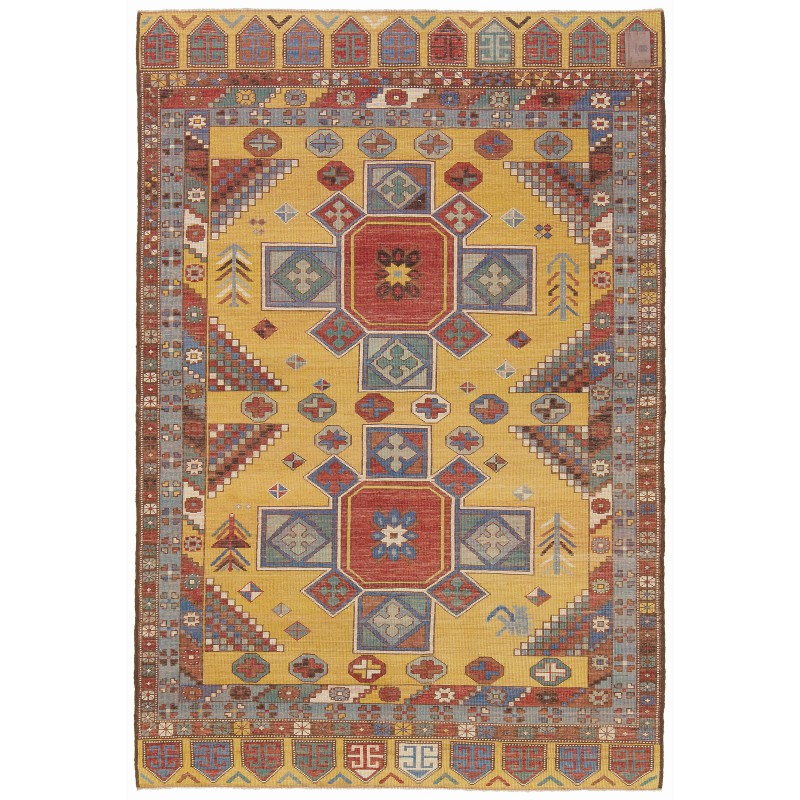



- Stock: In Stock
- Model: C50365
- サイズ: 188cm x 127cm
- SKU: ART365
この絨毯は、トルコのアナトリア中央アナトリア地域のコンヤ地方で18世紀に作られた絨毯のデザインの主要な要素として、二重のメダリオンを持っています。このタイプの絨毯は、二つのメダリオンを使用したものが、ヴェネツィア派とフレミッシュ派の両方の15世紀の絵画に頻繁に現れます。このパターンの伝統は、アナトリアの村の絨毯に18世紀や19世紀にまで生き残り、この絨毯は非常に力強い例です。フィールドのほとんどを占める二つの八角形は、中央に小さな八角形を囲み、その周りには「ラッチフック」のパターンが星のように広がっています。典型的な二つのメダリオンの中央八角形の絨毯には、16世紀の「ホルバイン」絨毯でよく見られる星と結び目のデザインがあり、すでに15世紀に使用されていました。フィールドのバランスは、隅に星と花の回転模様がある八角形の列で構成されており、コンパクトでやや静的なデザインに動きを与えています。ボーダーのパターンは、もともと花の形に基づいていますが、完全に幾何学的な単位に分割されています。専門家の間では、アナトリアの絨毯やキリムは古代の価値観やアイデアの象徴を記録していると信じられています。この伝統は何千年も前から存在し、産業時代になって初めて失われました。アナトリアのキリムデザインの伝統は、パイル織りの絨毯がより貴重に見え、何千年も前から高い威信価値を持っていたという事実によるものです。そのため、キリム織りは長い間、破壊されることなく文化的な環境の中で平穏に生き残ることができました。この絨毯のデザインは解釈され、柔らかい色が選ばれています。
This is a dual medallion as the main element of the design of 18th-century carpet from the Konya region, Central Anatolia area of Turkey. Rugs of this type, using two medallions, appear frequently in 15th-century paintings of both the Venetian and the Flemish schools. This pattern tradition survived into the 18th and even into the 19th century in Anatolian village rugs of which this is an exceptionally powerful example. The two octagons that fill almost all of the field enclose a small octagon in the center from which radiate rectangular panels in a star-like fashion, filled with “latch-hook” patterns. Typical two medallions central octagon carpets contain a star-and-knot design commonly found in “Holbein” rugs of the 16th century and used already in the 15th century. The balance of the field features rows of detached octagons with stars and rosette volutes in the corners which give a sense of movement to the otherwise compact and somewhat static design. The border pattern, although originally based on floral forms, is entirely broken up into geometric units. Among specialists, Anatolian carpets and kilims are believed to record symbols of ancient values and ideas. This tradition dates back several millennia and was only displaced during the industrial age. The Anatolian kilim design tradition probably owes its lucky survival to the fact that pile-woven carpets look more precious and would already have had a higher prestige value several millennia ago. Kilim weaving was, therefore, able to survive undisturbed within an intact cultural context for a long period of time. The design of this rug is interpreted and soft colors are chosen for this rug.
全部で10色使っています。主な4色は以下です。
- Khaki 413 (ホザキモクセイソウ)
- Natural Wool Color 37 (羊そのままの色)
- Feldgrau 414 (カモミール - 藍)
- Maroon 433 (茜)
上の番号は私たちのカラーコードです。()の中は、主な草木染めの材料です。
